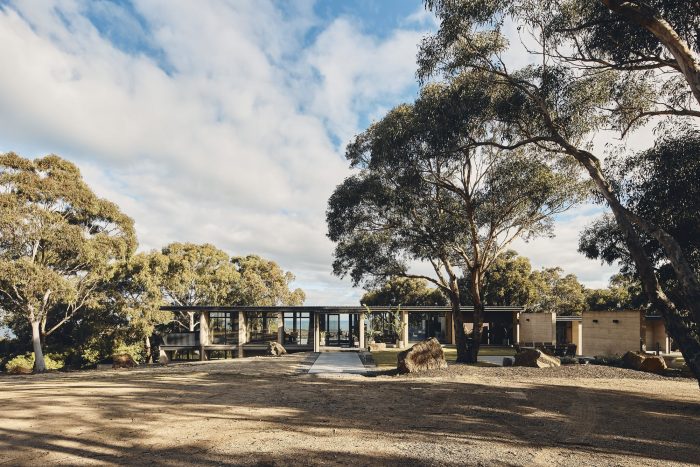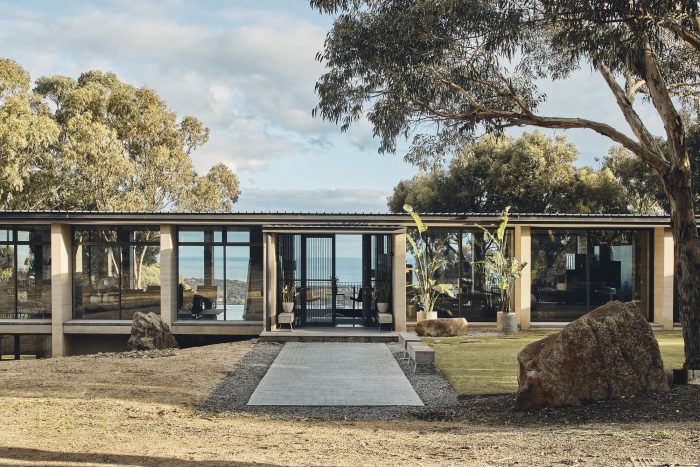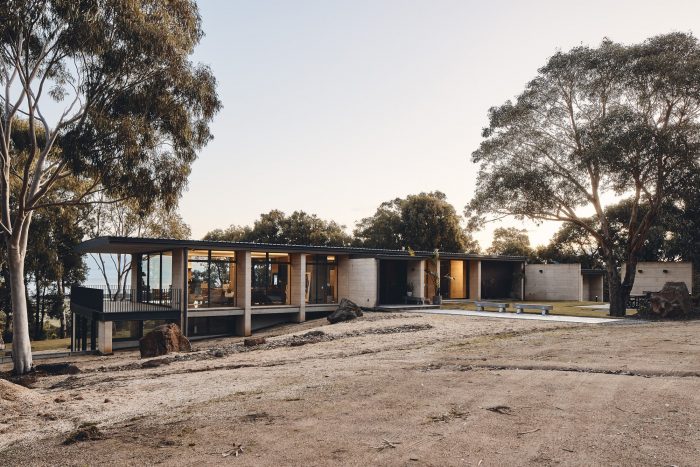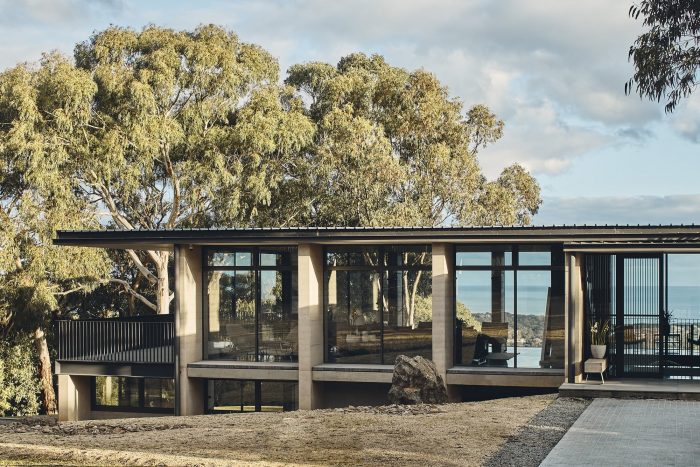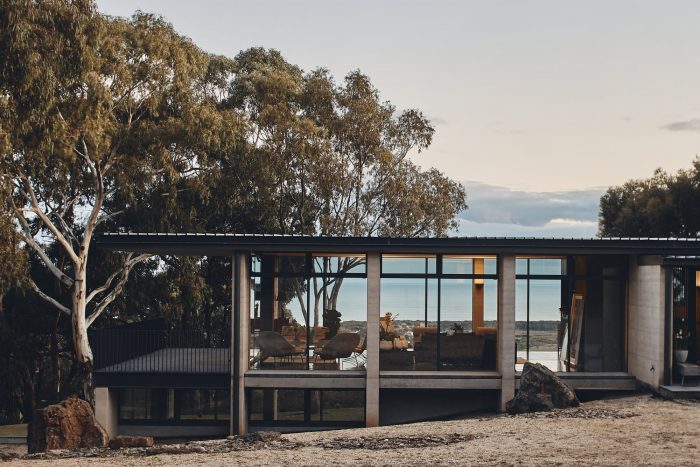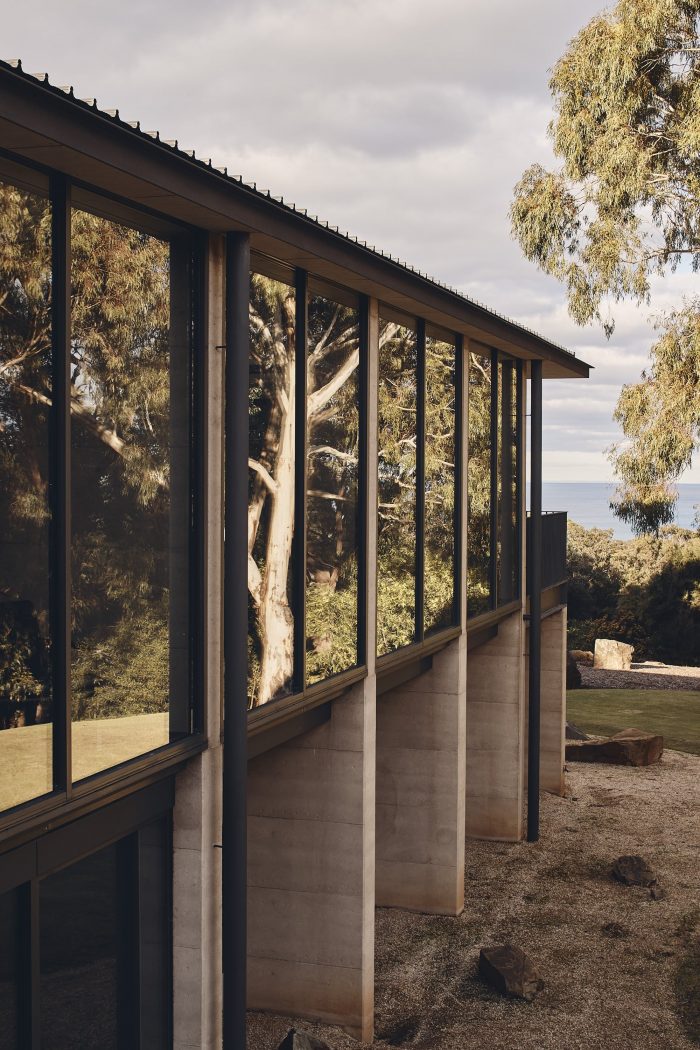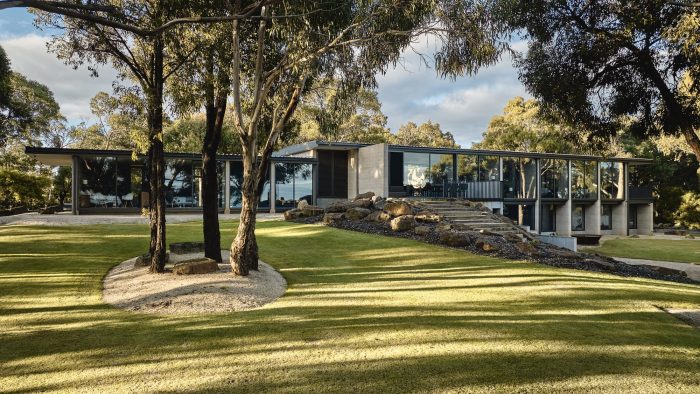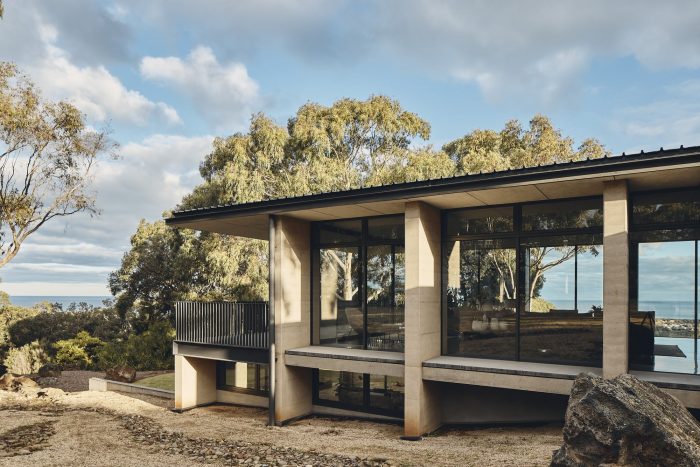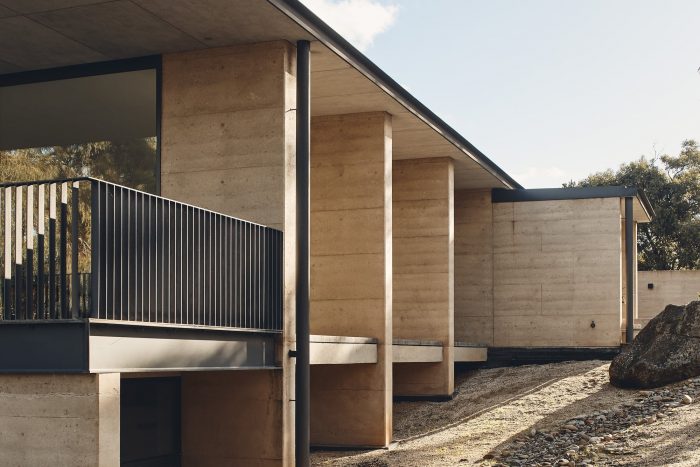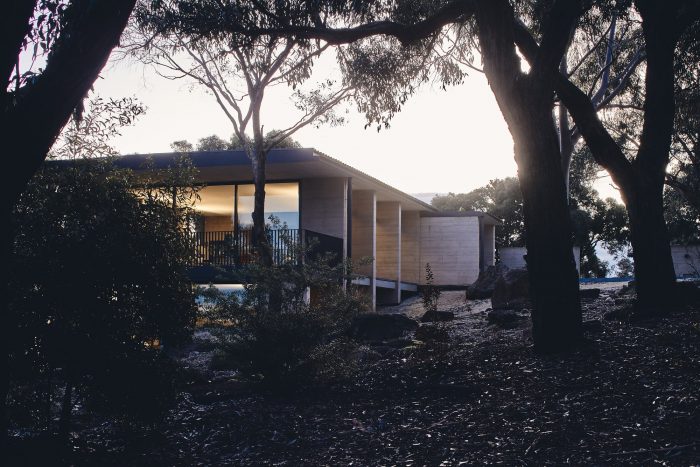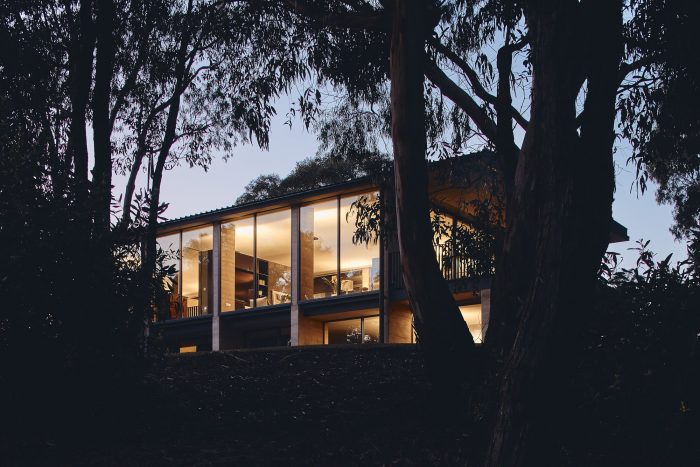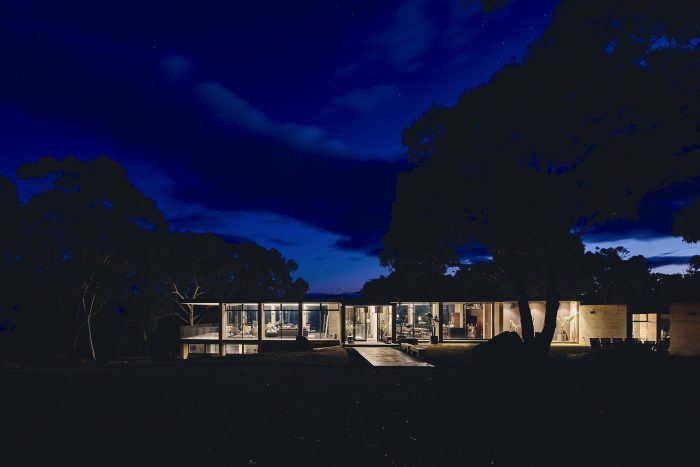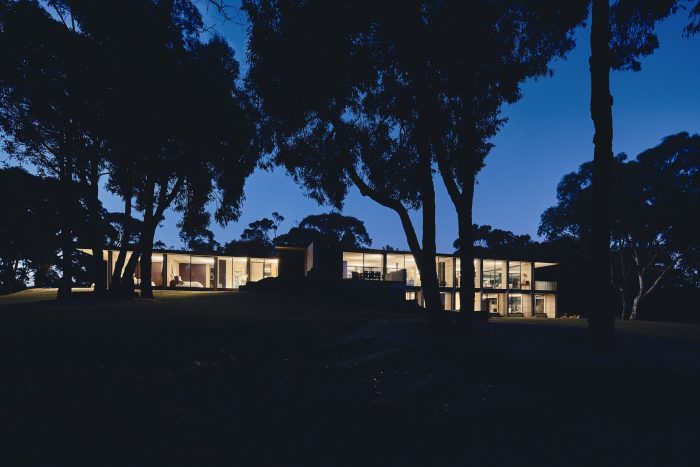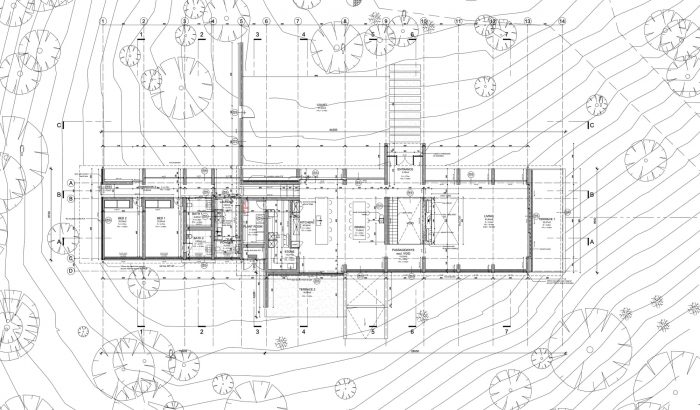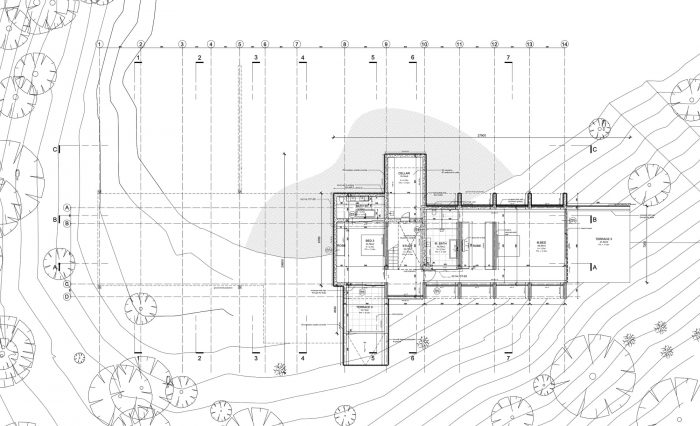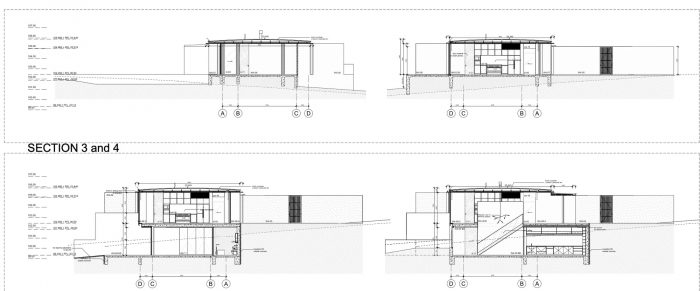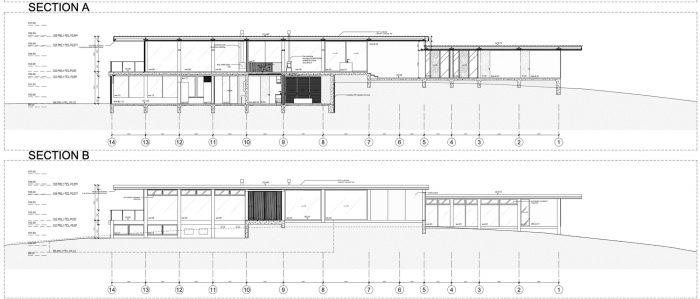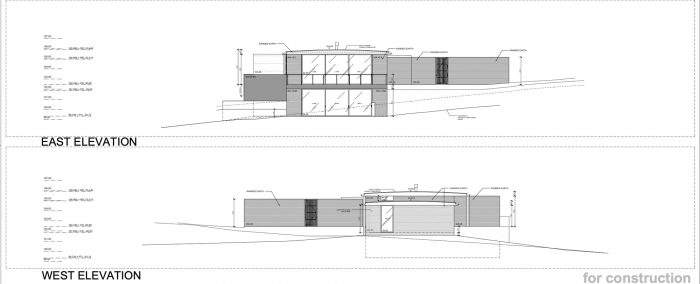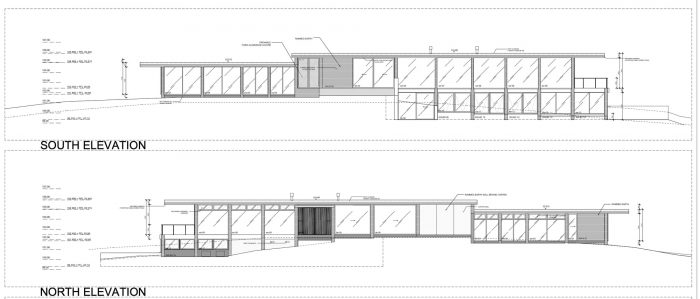艾雷斯-因特(Aireys Inlet)是一个安静的沿海小镇,位于澳大利亚维多利亚州的大洋路上。场地位于内陆,位于山丘边缘的茂密灌木丛中,南面可俯瞰入海口、灯塔和海洋,西面是山谷,东面是海洋,北面是灌木丛。这个地方有一些濒临灭绝的树种,我们小心翼翼地避开了这些树种和其他现有的树木,把房子建在现有的空地上,这个空地是1983年丛林大火后建造的简易住宅。
Aireys Inlet is a quiet coastal town located on the Great Ocean Road, Victoria, Australia. The site is inland slightly on the edge of the hills in dense bushland overlooking the inlet, lighthouse, and ocean to the south, a valley to the west, the ocean to the east, and bushland to the north. The site has some endangered tree species which were carefully avoided along with other existing trees by sitting the house in an existing clearing occupied by a simple dwelling built after the bushfires in 1983.
房子与场地和植被相呼应,选址是嵌套在坡度中的,允许房子自然向东南方向坠落,而土地有助于稳定四季的温度。这座房子是完美的东西走向,使冬季的阳光从北方深入到生活空间,并能捕捉到来自南方、来自海洋的凉风。
The house responds to the site and vegetation, the siting is nested into the gradient allowing the house to naturally fall away to the southeast, and the earth helps to stabilize the temperature over the seasons. The house is perfectly orientated east-west, allowing winter sun from the north to penetrate deep into the living spaces and to catch the cooling breezes from the south, coming off the ocean.
水平面框住了南面和东面的地平线,地板面切出了前景,使海洋看起来更近、更强烈。夯土墙有节奏地框住地平线的部分,揭示和隐藏,连接到景观中的亲密时刻,向北和向西看。
Horizontal planes frame the horizon to the south and east, the floor plane cuts out the foreground making the ocean seem closer and more intense. Rammed earth fin walls rhythmically frame sections of the horizon, revealing and concealing, connecting to intimate moments in the landscape looking north and west the fin walls frame the bush, singling out significant trees giving them prominence and focus, connecting the experience to these details and deepening the connection to nature
太阳通路的昼夜变化创造了与自然节奏的联系,这些节奏通过光和影转述在内部空间。南面固定玻璃的外部凹陷框架允许夯土墙以废墟或非建筑的形式存在,给人一种与景观和自然无干扰的联系。柱子之间的间隔空间允许私密的时刻,框住视野,创造出安静的思考空间和阅读的壁龛。
Diurnal and season flux of solar pathways create a connection to the rhythms of nature that are transcribed on the internal spaces by light and shadow. Externally recessed frames of the fixed glass on the south allow the rammed earth walls to existing in a ruin or unbuilt-like form, giving a distraction-less connection to the landscape and nature. The interstitial spaces between the columns allow intimate moments that frame views creating spaces of quiet reflection and reading niches.
这些窗户下的隐蔽通风口可以捕捉到南方的冷风,即使在大雨滂沱的时候也可以自然通风,用新鲜的香味空气使房间充满活力,并使人与景观联系起来。温暖的空气通过北侧的高窗排出,形成热对流,由于压力差异,即使在缺乏风压的时期,也能将空气拉过去。卧室无论是从字面上还是从隐喻上看都是挖出来的;大地提供了保护,同时也提供了前景和庇护;就像悬崖边上的洞穴。
Concealed vents under these windows catch the cooling southern winds allowing natural ventilation even during intense periods of rain, vitalizing the rooms with fresh scented air enlivening the senses, and connecting one to the landscape. Warm air is vented through high windows on the north side creating thermal convection currents which pull the air through due to the pressure differences creating cross ventilation even during periods lacking wind pressure. The bedrooms are dug in either literally or metaphorically; the earth provides protection whilst simultaneously providing prospect and refuge; like a cave on the edge of a cliff.
Architects: Studio Nicholas Burns
Area : 300 m²
Year : 2021
Photographs :Peter Bennetts
Rammed Earth Contractor : Earth Structures Surfcoast
Design Team : Nicholas Burns, Desmond Ong
City : Aireys Inlet
Country : Australia


